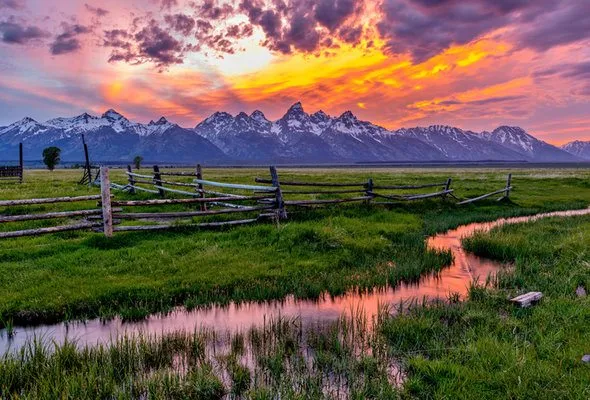Wyoming attracts newcomers for a variety of reasons, from its striking natural landscape to its abundant outdoor recreation. With several of the nation’s most iconic national parks and a culture that embraces wide-open spaces, the Equality State offers a lifestyle that appeals to many. Here are 15 key things to know before making the move.
If you’re planning a move to Wyoming, a financial advisor can help you create a financial plan.
1. Yellowstone Will Blow You Away
If you’ve never been to Yellowstone National Park, moving to Wyoming will give you the perfect opportunity to explore it. It’s one of the country’s most beloved national parks for a reason. While there, you can visit iconic sites like the Old Faithful geyser, hike past steaming geothermal features or watch wildlife roam the open valleys.
Living nearby also means you can experience the park across different seasons, from summer’s crowds to the quieter, snow-covered winter landscape.
2. Stargazing Is Easy in Wyoming
With its low population density and famous “big sky,” Wyoming is an excellent place for stargazing. Unless you live in one of the state’s few dense areas, you won’t have to worry about light pollution hindering your view of the stars. On clear nights, you can see far more of the Milky Way than in most parts of the country, and many communities even promote dark-sky preservation. It’s an ideal setting for anyone who enjoys astronomy or simply taking in wide, uninterrupted night skies.
3. Jackson Hole Is Worth the Hype
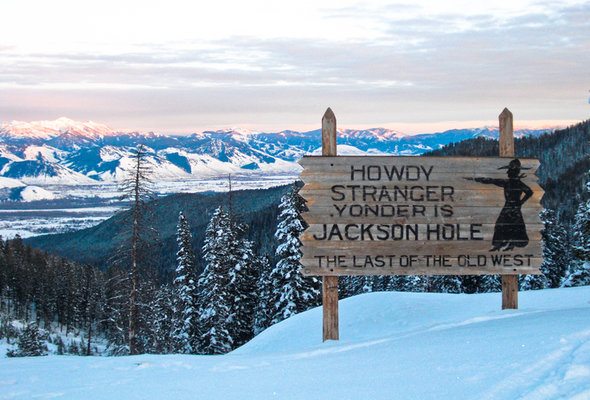
Teton County, Wyoming, where Jackson Hole is located, is one of the wealthiest counties in the country. Jackson Hole is the gateway to Grand Teton National Park, and skiing and hiking opportunities abound.
Wyoming is also very tax-friendly to retirees, which we’ll discuss in more detail further below. As a result, it’s a popular destination for retirees. Even if you don’t want to settle in the beautiful valley community, it’s worth a visit.
Learn more about Wyoming retirement taxes here.
4. Winters Are Cold and Snowy
Wyoming winters can be harsh. The average low temperature in December in Wyoming is just 17 degrees. But it’s not just the cold you have to worry about. Heavy snowfall is the norm during winter in Wyoming. Wind can make conditions feel even more severe, especially in open areas where gusts are common. Many residents invest in reliable winter gear, snow tires and emergency car kits to stay safe during long stretches of icy weather.
Still, for those who enjoy winter sports, the season offers plenty of opportunities for skiing, snowshoeing and snowmobiling.
5. Cowboy Culture Is Alive and Well
Wyoming has a definite cowboy vibe that might remind you of what you’d find in Texas. Cowboy boots and trucks are big in Wyoming, and ranching and rodeos are part of life. The western way of life is held dear in Wyoming, with some towns hosting weekly rodeos in the summer. You’ll also find that local festivals, parades and county fairs often celebrate ranching traditions and frontier history.
Many residents take pride in maintaining a strong sense of community, independence and respect for the land. If you appreciate wide-open spaces and a laid-back, western lifestyle, you may feel right at home.
6. You Can Check Out Devil’s Tower While It’s Still Around
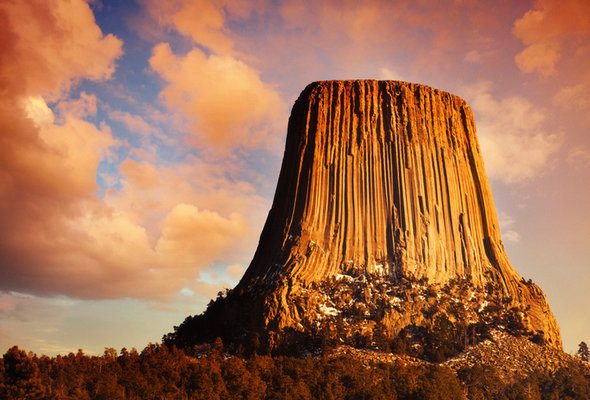
Devil’s Tower is a remarkable geological formation that was famously featured in the movie “Close Encounters of the Third Kind.” It’s an iconic site, but one that’s eroding.
The monument draws thousands of visitors each year for hiking, climbing and sightseeing, offering breathtaking views from every angle. Its unique structure makes it one of the most recognizable landmarks in the country, and standing at its base provides a powerful sense of the area’s natural history. Because erosion is a slow but constant process, many travelers make it a point to visit sooner rather than later.
7. Most Wyoming Residents Are Carnivores
As you might have gathered from what we’ve told you about the prevalence of ranching in Wyoming, meat-eating is big in the Equality State. Chicken-fried steak, elk, bison burgers and rack of lamb are all popular menu items in Wyoming.
8. Your Nearest Neighbor Might Be Pretty Far Away.
Wyoming has the second-lowest population density of any state in the country. Depending on where you buy or rent a home, your nearest neighbor might not be all that close.
That, combined with the state’s harsh winters, means it’s a good idea to keep a basic winter survival kit in your home and vehicle.
Learn about Wyoming property taxes here.
9. You Can See Bison in Wyoming.
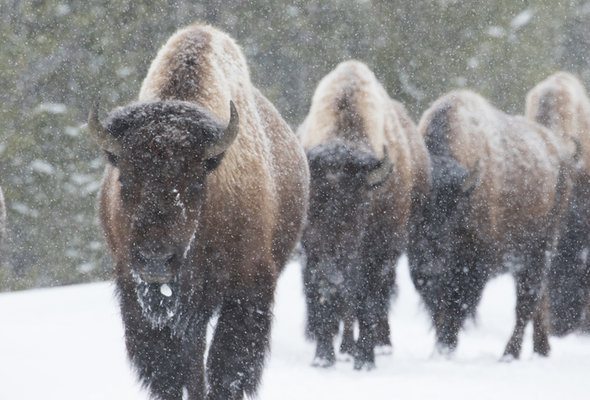
The Wyoming state mammal is the American buffalo, also known as the bison. A bull bison can weigh up to 2,000 pounds and their shoulders reach heights of roughly six feet. In other words, if you see a bison after moving to Wyoming, don’t provoke it.
10. The Air in Wyoming Is Clean
Cheyenne, Wyoming frequently tops lists of the U.S. cities with the best air quality. The state’s low population density means there isn’t much pollution from vehicles and the heating, cooling and lighting of buildings. Plus, there are many square miles of preserved land in Wyoming that’s off-limits for polluting development.
Learn about Wyoming estate taxes here.
11. There’s a Small-Town Feel
The low population density in Wyoming doesn’t mean that residents are socially isolated. There’s a small-town feel, with neighbors relying on neighbors and finding their own ways to stay entertained and active. People know their neighbors’ names and wave to other drivers they pass on the road in Wyoming.
Check out current mortgage rates in Wyoming.
12. Cheyenne Has some Big-City Amenities
Downtown Cheyenne has an Old West feel, but the city provides many of the modern amenities you’d expect from a capital city. There are nightlife options in the form of bars, lounges and breweries. There are restaurants serving Mexican, Korean and Thai food in addition to the classic diners and steakhouses.
13. Traffic Is Light in Wyoming
If you currently live somewhere with heavy traffic and bad drivers, you’re probably ready for a change. Why not consider moving to Wyoming? The low population density means traffic is light and you might have long stretches of open road to yourself when you’re driving from place to place.
14. Extractive Industries Are a Big Part of the Economy
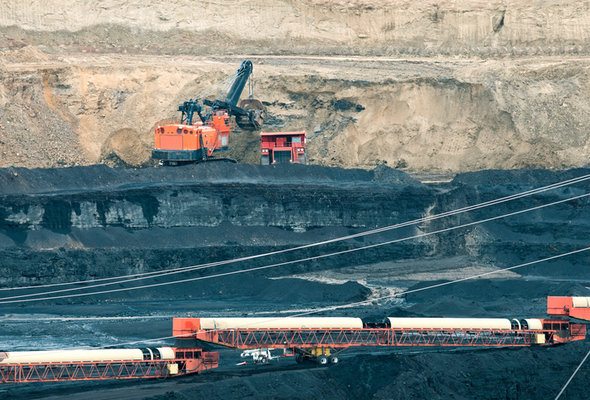
Conservation and extraction are both key features of the Wyoming economy. The preserved parkland attracts tourists whose spending contributes to the state’s economy. At the same time, mining and extractives are also economic engines for Wyoming. Some people are drawn to the state to preserve the land while others move to Wyoming to work on extracting resources from the land.
15. Living in Wyoming Could Change Your Outlook
Moving to Wyoming might prompt a change in your outlook. All the open space, clean air and stargazing in Wyoming have to be a good influence, right? Particularly if you’re moving to Wyoming from a fast-paced, crowded city like New York, the move could be life-changing.
Find out now: How much house can I afford?
Taxes and Financial Benefits
Wyoming is one of the most tax-friendly states in the country, which is a major draw for both working adults and retirees. The state does not levy a personal income tax, meaning wages, investment income and retirement benefits aren’t taxed at the state level. That alone can make a noticeable difference in your take-home pay or retirement income compared to higher-tax states.
The overall tax burden in Wyoming is also relatively low. While residents do pay sales and use taxes, the base rate is modest and local add-ons vary by county. Property taxes tend to be lower than the national average as well, though rates can differ depending on where you buy a home.
As we mentioned above, Wyoming is particularly appealing for retirees. Because Social Security benefits, pension income and withdrawals from retirement accounts aren’t taxed by the state, many older adults find their dollars stretch further here. When you combine that with the state’s low population density and outdoor lifestyle, it becomes clear why Wyoming consistently ranks as a retirement-friendly destination.
Bottom Line
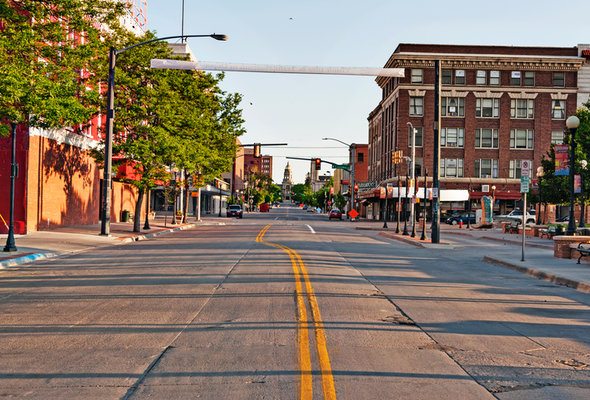
Moving to Wyoming offers a unique blend of natural beauty, wide-open spaces and a strong sense of community, but it also requires a realistic understanding of the state’s climate and lifestyle. Long, snowy winters, rural living and significant distances between towns can be challenging if you’re used to urban conveniences. At the same time, Wyoming’s clean air, low taxes, outdoor recreation and friendly small-town culture make it an appealing choice for many newcomers, including retirees and remote workers. If you’re considering a move, it’s important to evaluate your budget, housing options and long-term financial needs before relocating. A financial advisor can help you determine whether life in the Equality State is the right fit for you.
Tips for Moving to Wyoming
- A financial advisor can help you navigate big life changes like a move, or just with identifying and meeting your financial goals in general. SmartAsset’s free tool matches you with financial advisors who serve your area. You can interview your advisor matches at no cost to decide which one is right for you. If you’re ready to find an advisor who can help you achieve your financial goals, get started now.
- If you are moving to a new state, it’s a good idea to understand how the change will impact your budget. SmartAsset’s Wyoming paycheck calculator can help you determine how living in the Centennial State will impact your take-home pay.
Photo credit: ©iStock.com/SeanXu, ©iStock.com/TenleyThompson, ©iStock.com/powerofforever, ©iStock.com/SBTheGreenMan, ©iStock.com/PhilAugustavo, ©iStock.com/Jerry Moorman
